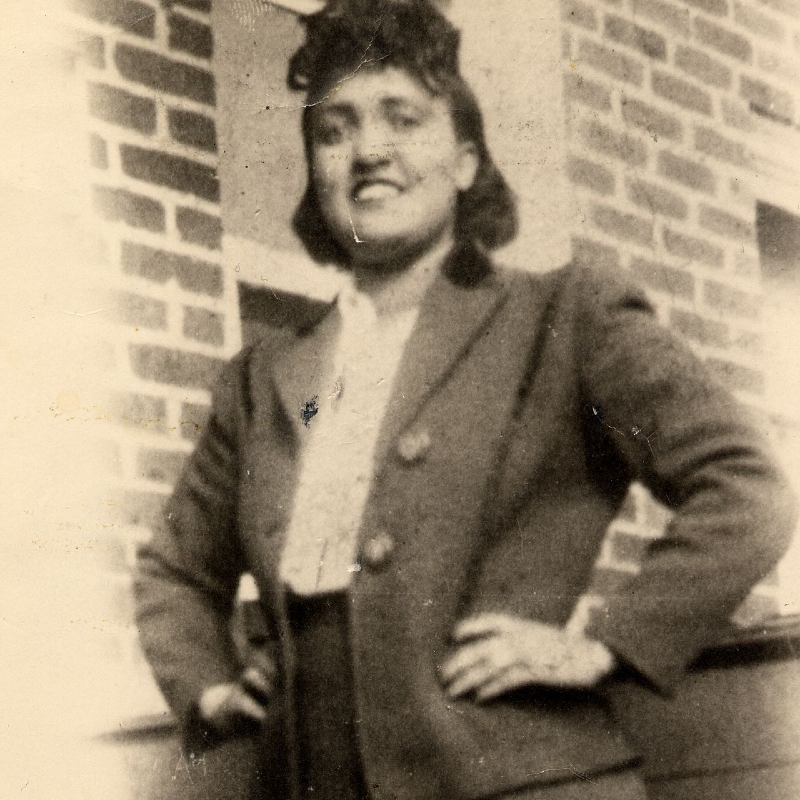

This episode of Ballot and Beyond, contributed by the Maryland Women’s Heritage Center, was written by Dr. Adele Newson-Horst, Professor of English at Morgan State University. The reader is Dr. Newson-Horst.
Henrietta Lacks was a resident of Turner Station, Maryland, in Baltimore County. She is best recognized for her immortal HeLa cell line (named for the first two letters of her first and last names). Since her death in 1951, her cells divide again and again and rebuild after each division. It is because HeLa cells can be grown continuously in labs, researchers started to rely heavily on them for their experiments.
Ballot & Beyond is powered by Preservation Maryland and PreserveCast with support from Gallagher, Evelius & Jones and the Maryland Historical Trust.
Henrietta Lacks was a resident of Turner Station, Maryland, in Baltimore County. She is best recognized for her immortal HeLa cell line (named for the first two letters of her first and last names). Since her death in 1951, her cells divide again and again and rebuild after each division. It is because HeLa cells can be grown continuously in labs, researchers started to rely heavily on them for their experiments.
Her cells have been used in research that led to the development of the Polio vaccine and the development of the cancer drug tamoxifen as well as chemotherapy. Advanced research for influenza, Parkinson’s disease and leukemia cures were major contributions developed from the HeLa cells. Further research, which led to gene mapping, cloning and in-vitro fertilization are also to be included among contributions made by HeLa cells. HeLa cells were used to test the effects of atomic radiation, and they were sent into outer space for experimentation on zero gravity. These immortal cells are still the highest-ranking research cell used throughout all major medical research complexes around the world. Research involving HeLa cells has been described in more than 110,000 scientific publications. This staggering number makes it clear just how important these cells have been to research over the past six decades.
Henrietta Lacks was born Loretta Pleasant on August 1, 1920—the same year that the 19th Amendment to the Constitution was ratified. She was born in Roanoke, Virginia. Her father moved the family to Clover, Virginia, after the death of her mother. In Clover, she lived with her paternal grandfather, Tommy Lacks. She married David “Day” Lacks in 1941, and the family moved to 713 New Pittsburg Avenue in Turner Station, Maryland in search of economic security provided by the booming factory of Bethlehem Steel. She resided there until her death.
Mrs. Lacks’ story is not complete without a history of Turner Station. Turner Station at the time was a booming, segregated community. It had its own Savings and Loans Company, grocery stores, taxi services, several black doctors, dentists, salons, and barbershops. Historians maintain that the dollar turned over 8 times before leaving the community.
In 1951, Henrietta Lacks went to Johns Hopkins Hospital for treatment for an unknown illness. After several hospital visits, she died of cervical cancer on October 4, 1951, at the age of 31 years, leaving behind her husband and five children. Two days after her death, a lab attendant discovered that the HeLa cells were growing. Confirmed through research led by Dr. George Gey, this marked the first instance of continuous growth of human cells outside the body.
Others who are important to Henrietta Lacks’ story were Dr. William C. Wade (her African American primary care physician), and Dr. Roland A. Pattillo. (Dr. Pattillo was the only African American student working under Dr. Gey, and he later led the team to discover the HPV vaccine. Dr. Pattillo was the person responsible for placing headstones on the graves of Mrs. Lacks and her daughter Elsie).
The HeLa cells would go on to transform modern medicine. However, it took some twenty-five years before the Lacks family received any knowledge of the immortal contribution their beloved wife and mother was making to medical science. Her cells were widely shared and then became commercialized and are still sold to this day. Meanwhile, the Lacks family has received no compensation for the contribution Mrs. Lacks has made to modern science. The Henrietta Lacks story raises ethical, racial, and socio-economic issues related to the medical-industrial complex.
Previous episode





